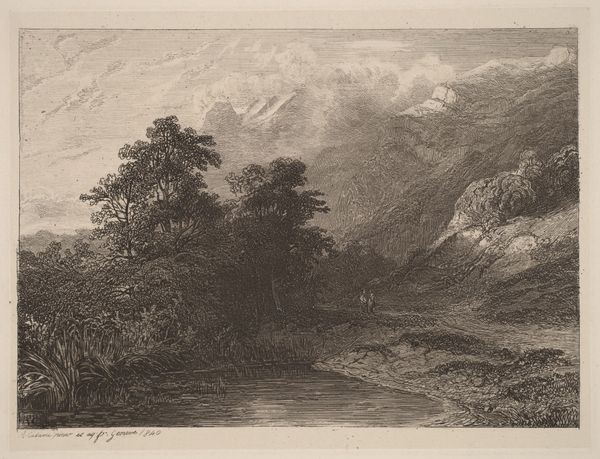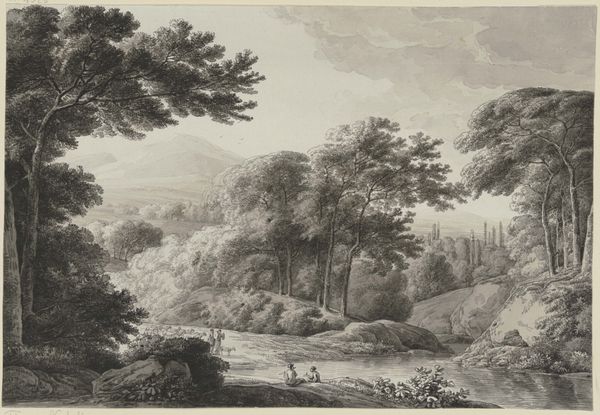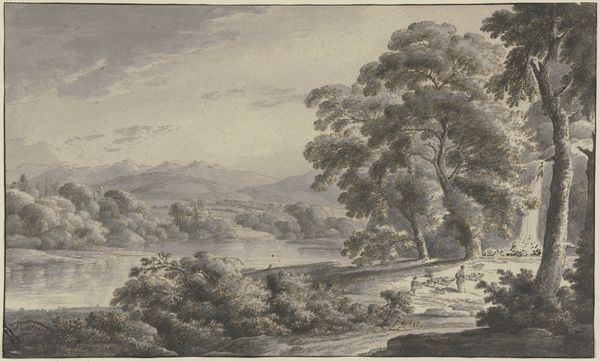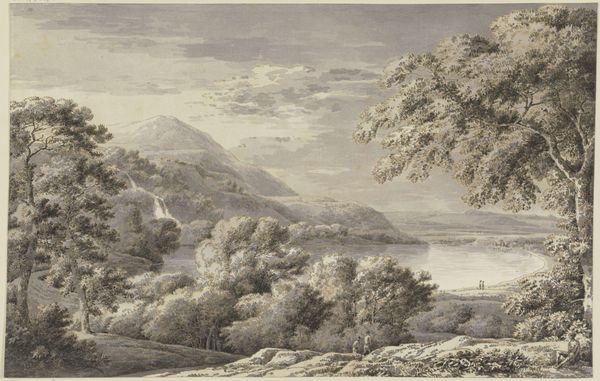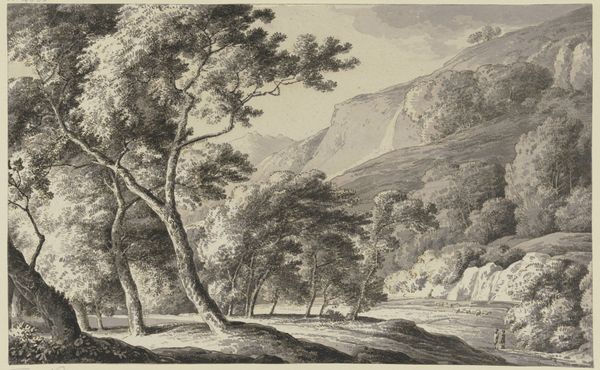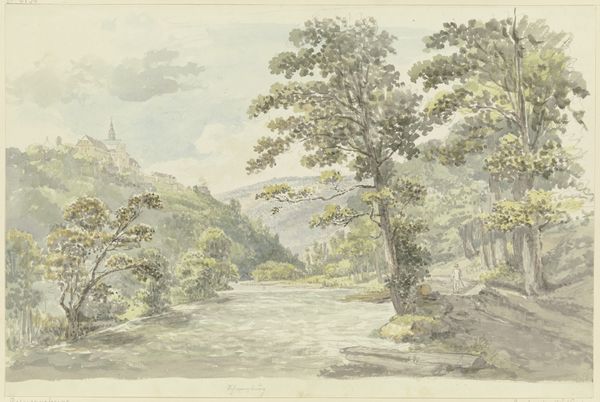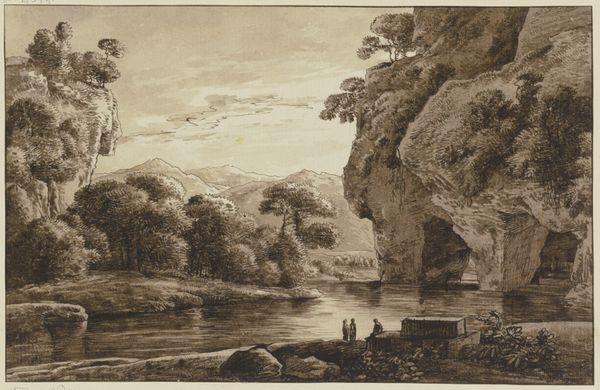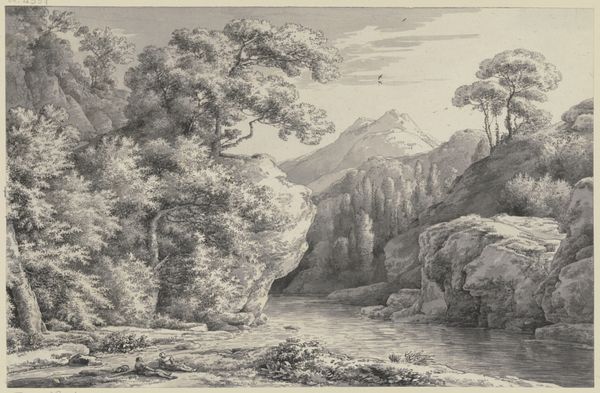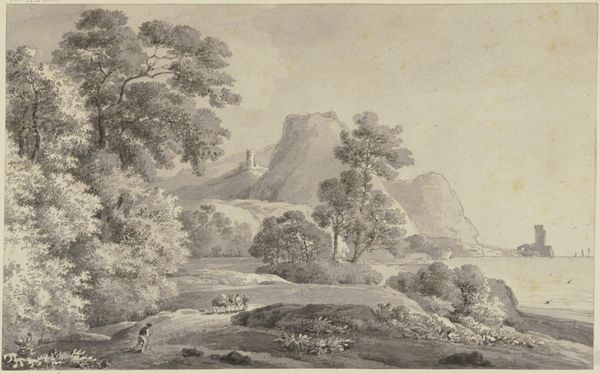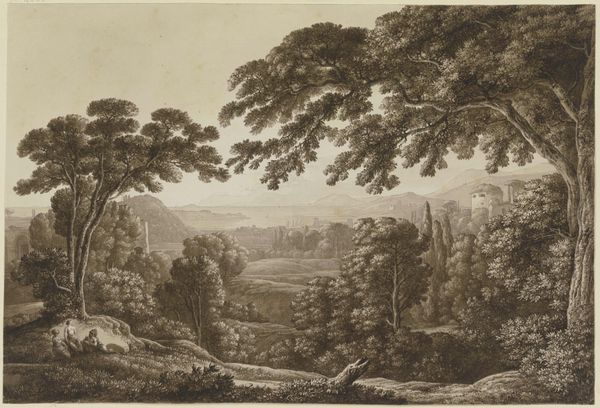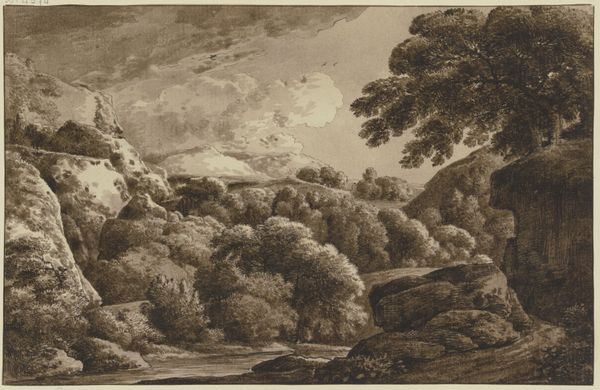
drawing, paper, ink
#
drawing
#
landscape
#
paper
#
nature
#
ink
#
romanticism
#
15_18th-century
#
nature
Copyright: Public Domain
Editor: This drawing, "Waldige Gebirgslandschaft mit Wasserfall" – which I believe translates to "Wooded Mountainous Landscape with Waterfall" – is by Franz Kobell. It’s rendered in ink on paper, and while it doesn’t have a specific date listed, it’s noted to be from the 18th century. The monochromatic palette and incredibly detailed linework give it such a serene, almost ethereal quality. What do you see in this piece? Curator: Well, let's consider the materials. Kobell's choice of ink, and the mass production of paper during this period, point to shifting access to art making. This isn't oil on canvas for a wealthy patron, but a drawing, reproducible perhaps, engaging a potentially wider audience. The labor, both Kobell’s in execution, and the unseen hands producing paper and ink, speak to art becoming entangled with burgeoning industrial processes. The landscape itself, wild as it seems, would have been consumed visually by an audience increasingly distanced from such nature, wouldn’t you agree? Editor: That’s interesting. I hadn’t considered how access to materials like paper could influence who could create art and who might consume it. So, you’re saying the *accessibility* of ink and paper reshapes the artistic landscape itself? Curator: Precisely. Romanticism often idealizes nature, but through a materialist lens, we see that even that ideal is mediated by production, by labor, and consumption patterns specific to its time. The detailed rendering implies skilled labor, but also asks us to consider who could afford art, even drawings, and what this reflects about their social standing, wouldn't you agree? Editor: It completely reframes my perspective. I tend to look at art through a theoretical lens, but thinking about the actual nuts and bolts, the physical making of it, adds a new layer. Curator: Exactly. It pushes us to question not just what the art *represents*, but how it came to *be*. And how that 'being' connects it to larger social and economic currents. Editor: Thank you. It certainly does shift my focus toward a more material understanding. Curator: And hopefully reveals how deeply embedded the hand of society is within the artist's hand.
Comments
No comments
Be the first to comment and join the conversation on the ultimate creative platform.
